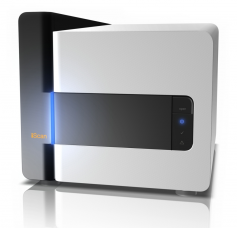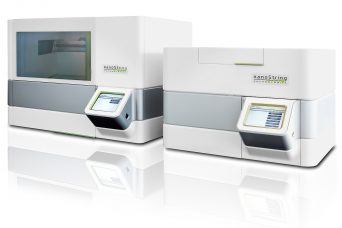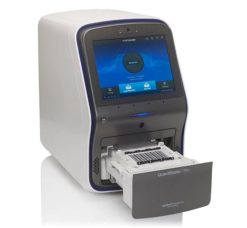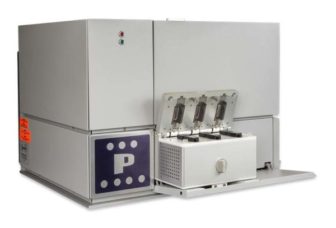Our laboratory is equipped with the most efficient and innovative technologies dedicated to genotyping, ddPCR, QPCR, proteomics and expression studies. We are thus able to respond to all requests in this field.

iScan – Illumina
The iScan array scanner enables a wide variety of applications for superior genetic analysis studies, including:


nCounter analysis – Nanostring
nCounter analysis – Nanostring : The nCounter® Analysis System from NanoString Technologies offers a simple, cost-effective way to profile hundreds of mRNAs, microRNAs, or DNA targets simultaneously with high sensitivity and precision. Digital detection of target molecules and high levels of multiplexing eliminate the compromise between data quality and data quantity, producing gold-standard sensitivity and reproducibility for studies of hundreds of targets. NanoString’s system uses molecular “barcodes” to detect and count hundreds of unique transcripts in a single reaction. Unlike other methods, the protocol does not include any amplification steps that might introduce bias to the results. The systeme is divided in two parts:


QuantumStudio 7 Pro – Life Technologies
The new QuantStudio 7 Pro system is a 7th generation real-time PCR system that enables high qPCR productivity thanks to its flexibility, specificities and performance.
1°) Determination of the concentration of a nucleic target thanks to a control concentration curve (standard curve). Use of specific TaqMan probes or SYBR Green.
2°) Determination of the relative concentration of a sample or a target thanks to a standard curve and an endogenous control. Concentration measurements are thus normalized using the endogenous control. Use of specific TaqMan probes. This method can be used to :
3°) Determination of the genotype of a genetic variant (SNP or Insertion/Deletion) either in real time (Real Time PCR) or at the end of the PCR reaction. Use of specific TaqMan probes.
4°) Determination of the presence or absence of the expression of a gene in a sample. Realization of a PCR with two TaqMan probes specific to an internal control and to the gene of interest.
5°) Determination of the melting temperature of a nucleic target (TM). Realization of a melting curve by a temperature gradient in the presence of SYBR Green at the end of the PCR. Determination of the presence or absence of contaminating amplificates.
For each point, the study can be done either on 96 samples or on 384 samples.


Pamstation12 - PamGene
The PamStation 12 is a fully automated instrument designed for processing PamChip 4 microarrays. It is available with either phosphotyrosine kinase (PTK) or serine-threonin kinase (STK) arrays. The 3D surface of the PamChip microarrays provides unique characteristics to allow real-time analysis of nucleic acid and protein binding for allows enzymatic reactions of kinases to be followed kinetically.
The sample consisting of protein and labelled antibodies are dispensed onto the PamChip, which is placed in the PamStation12. Once inside the instrument the sample is hybridized or incubated at a pre-determined temperature. During hybridization or incubation the sample is pumped back and forth through the porous material to maximize binding kinetics and minimize assay time. Reaction times are typically minutes to an hour.
